Russian Soldiers Camped in Chernobyl's Radioactive Forest. Guess What Happened Next.
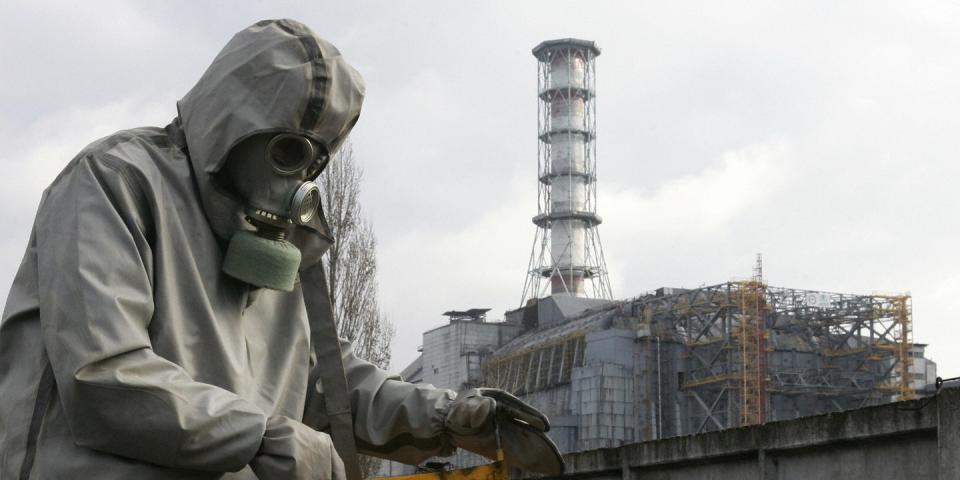
Since the notorious meltdown and explosion of its No. 4 reactor in 1986, Chernobyl has become the global touchstone for what can go awry with nuclear power. The long-tailed aftermath of the disaster has been the subject of everything from a prominent BBC dramatization and a cult classic video game. In 2017, the compromised reactor was re-entombed in a modernized sarcophagus to mitigate release contaminants from nearly 250 tons of nuclear fuel, irradiated dust, plutonium and uranium within.
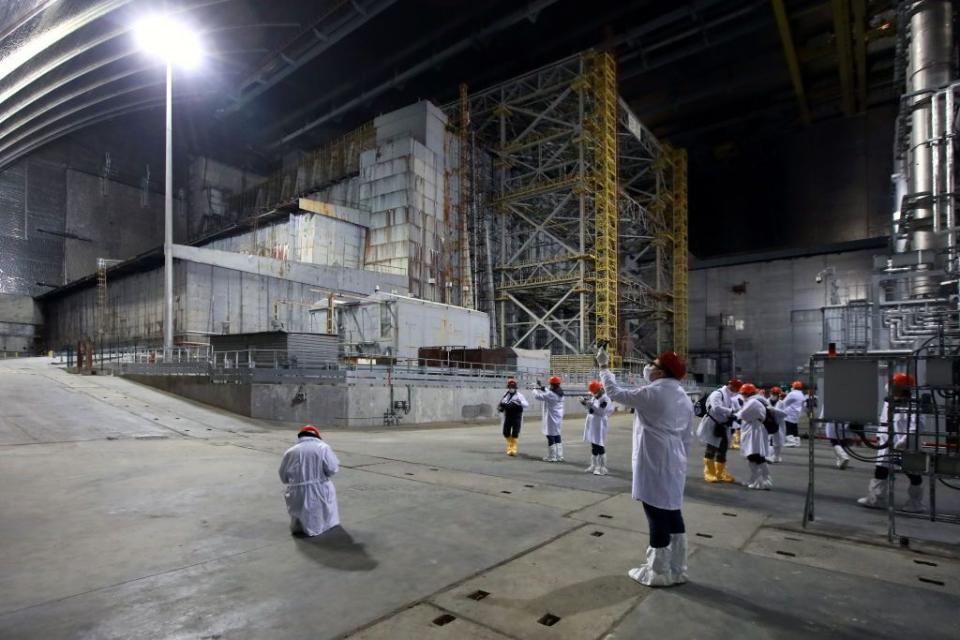
But somehow, the still-very-real health risks inherent to lingering around certain parts of the Chernobyl Exclusion Zone just didn’t sink in with Russian soldiers and their commanding officers based in Belarus, who invaded Ukraine in 2022.
Radiation sunk in, though—particularly after Russian troops dug into the zone’s heavily irradiated Red Forest. And today, some soldiers are still falling sick, according to diplomatic sources cited by the UK journal The Independent.
The identity of the source is unclear, but these are not the first such claims of radiation sickness amongst Russian troops in that area. The U.K.’s Telegraph alleged in April 2022 that a Russian soldier died from radiation exposure at Chernobyl. During Russia’s occupation, Ukrainian sources claimed Russian soldiers were pulled from garrison duty for treatment at radiation research center in Gomel, Belarus—a claim later supported by doctors in Belarus affiliated with the opposition.
A radioactive pitstop to Kyiv
Situated amidst the Pripyet marshes on Ukraine’s border with Belarus, the P56 highway running through Chernobyl happened to offer one of just a handful of convenient invasion routes to the Ukrainian capital of Kyiv. Prior to the war, Russia’s intention to advance via this road could be seen by the building of a pontoon bridge to ford a river on the Belarussian side of the border across from Chernobyl.
By the afternoon of the war’s first day, columns of the 36th Combined Arms Army had seized Chernobyl, accepting the surrender of the local National Guard detachment and taking roughly 210 civilian staff, as well as the guardsmen, hostage.

While a Russia garrison entrenched themselves with bull dozers and tanks, convoys full of troops and supplies from the 36th Army rolled through. This was particularly treacherous across the notorious Red Forest, where much of the contaminate top soil around Chernobyl was moved and buried, having soaked up much of the ionized radiation.
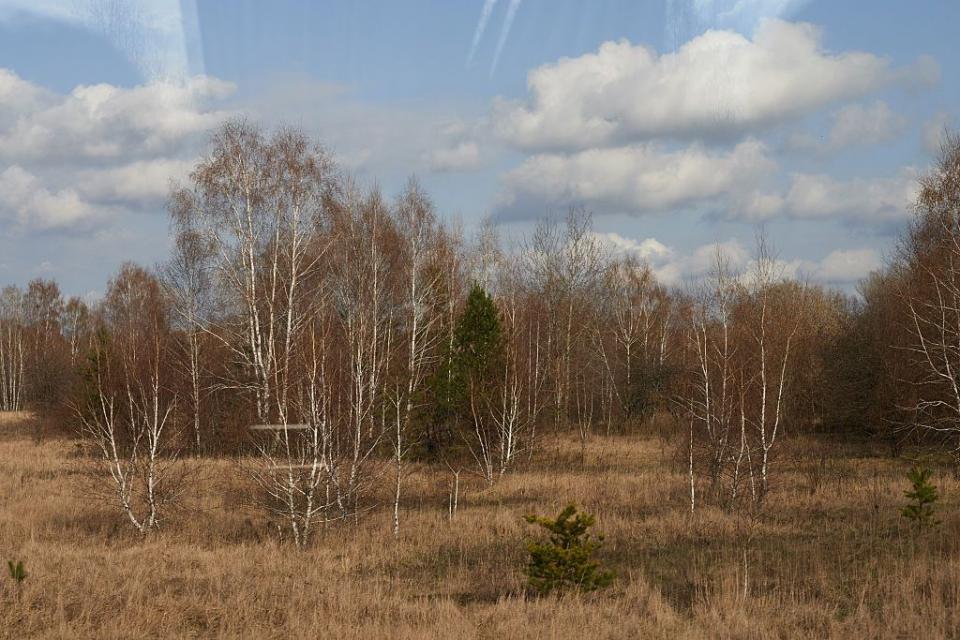
The forest is so named because radiation killed the trees and turned their bark red. Ironically, though, the absence of human activity has led wildlife to flourish in this so-called ‘radiological reserve.’ Studies have found animals such as dogs, frogs, rodents, birds and bacteria in the zone are apparently prone to mutation at a greatly accelerated rate, though whether that’s due to the local radioactivity has not definitively been proven.
When Russian troops drove through in tracked, armored vehicles and entrenched themselves in the forest’s soil—building trenches, foxholes and even a underground bunker network—they kicked up clouds of radioactive dust that would have been highly hazardous to their health if inhaled, especially continuously over the course of days or weeks. This caused external monitoring stations to detect a 20-fold increase in radiation levels during Russia’s occupation, from 3 micro sieverts per hour to 65.
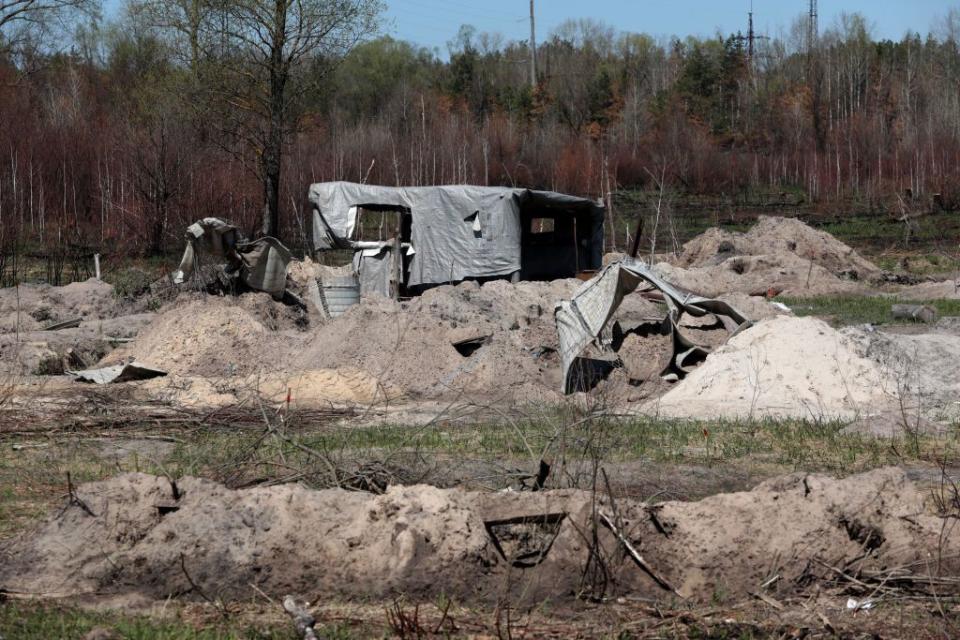
If that were not enough, Russia’s Chernobyl garrison was apparently hungry and went hunting and fishing around the Exclusion Zone. Notably, they reportedly fished for catfish—which had multiplied in the reactor’s water-cooling channel—and shot wild animals. Ingesting or inhaling irradiated particles can cause harmful effects much more rapidly than ambient radioactivity.
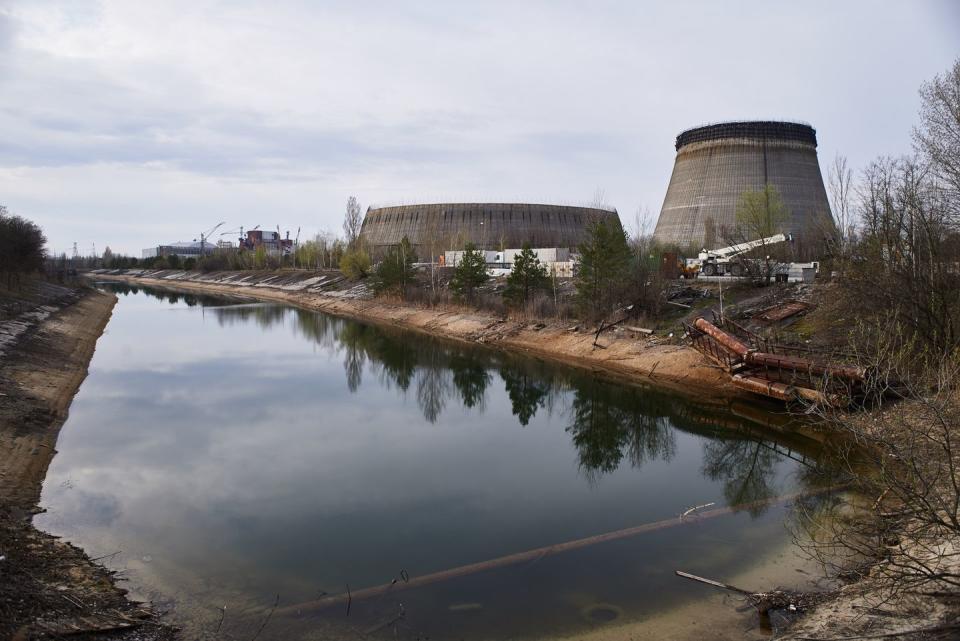
In one incident, a Russian CBRN specialist even allegedly picked up some cobalt-60 (a highly radioactive isotope) with his bare hands, exposing himself to a massive dose of radiation in a matter of seconds.
As Russia’s Kyiv campaign became bogged down in failure, Russian forces finally pulled out of Chernobyl between March 20th and April 1st, after trashing the facilities and looting valuable equipment and some radioactive materials—which were later tracked back to Gomel and Minsk in Belarus.
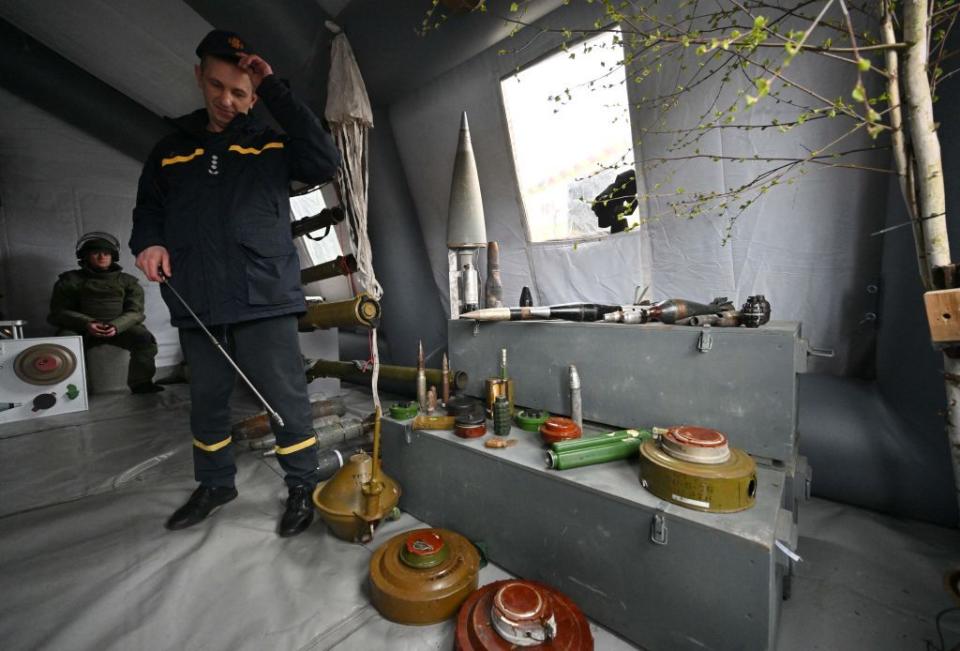
Nine plant staff were killed and five more were kidnapped. Buildings were burnt down, left riddled with bullets and graffiti, or laced with concealed landmines and trip-wire booby traps. Lost equipment included nearly 700 computers, 350 vehicles and 1,500 dosimeters, totaling $135 million.

Fortunately, the integrity of the sarcophagus around Reactor No. 4 was not compromised, despite a scare related to a loss of electrical power in mid-March. Looting did result in loss of customized monitoring software used to monitor radiation safety levels.
Reckless exposure
It’s shocking that Russia’s military disregarded the well-known radiation hazards persisting around Chernobyl. Like any major military power, Russia has long maintained a corps of specialized CBRN or NBC troops trained to help mitigate radiation hazards, as well as products of other types of WMDs. During the Cold War, armies expected their troops to keep on fighting on battlefields irradiated by tactical nuclear weapons, and equipped and trained their forces accordingly.
Yet Russian commanders deployed their regular soldiers into heavily irradiated areas near Chernobyl, either without regard for their safety, or out of ignorance of the risks.
In peacetime, tourists who visit the exclusion zone are not—by virtue of following regulations—overly exposed to health hazards. Russian forces theoretically could have transited through Chernobyl with minimal radiation exposure as well by avoiding the Red Forest and other high-risk areas.
Admittedly, that might have increased risks of congestion along the main route, and imposed limits on the defensive perimeter Russian forces could set up.
But maybe that would have spared some soldiers from radiation sickness, which can be deadly in the short and long term.
Strictly speaking, everyone on Earth is continuously exposed to low levels of ambient radiation. But harmful effects manifest when a person’s hourly dosage of ionized radiation exceeds certain thresholds. Those effects come in the form of elevated cancer risks (particularly leukemia), a phenomenon observed in survivors of the atomic bombings of Hiroshima and Nagaski.
Higher doses can also cause near-term risks to life in the form of acute radiation sickness, initially resulting in nausea, vomiting, fever and headaches. Exposed skin may also redden and, in especially high exposure incidents, blister and ulcerate.
Serious exposure can result in bleeding and depletion of white blood cells, leaving the afflicted more likely to succumb to disease and physical injuries like burns. Additional symptoms—such as bleeding within the gastrointestinal tract and effects on the nervous system, starting with dizziness and loss of consciousness—are usually fatal for those afflicted.
While Russian troops deployed to Chernobyl likely didn’t experience the most intense kinds of radiation sickness, the fact that some inhaled or ingested highly radioactive particles over the course of a more than month could still result in significant negative health outcomes.
Along with the countless bullets, shells and missiles hurled across Ukraine this last year, it’s yet another type of harm—albeit self-inflicted—resulting from Putin’s catastrophic invasion.
You Might Also Like
